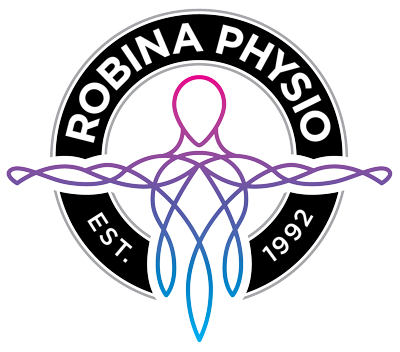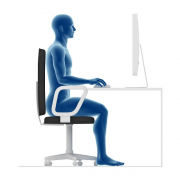Office Ergonomics
Office Ergonomics
By Corinne O’Connor, Physiotherapist.
Over the past few years so many of us have shifted our work space from an office building to working from home, at least part of the time. And that usually involves finding a workspace that works. The problem is that without a good set-up, we are more prone to pain and injury.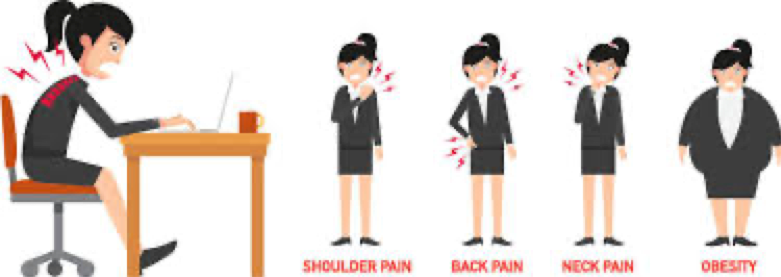
Office Ergonomics – what exactly is that?
Ergonomics derives from two Greek words: ergon, meaning work, and nomoi, meaning natural laws. Combined they create a word that means the science of work and a person’s relationship to that work. In practice, ergonomics is about designing and arranging things in a workspace so that the people and things interact most efficiently and safely.
Our bodies are designed to work most efficiently in certain postures. Our spines are designed in an S curve, and when this curve is maintained, all the muscles work most optimally. When we overextend or flatten this natural curve for prolonged periods of time, we put more strain on our muscles, nerves, ligaments and skeleton.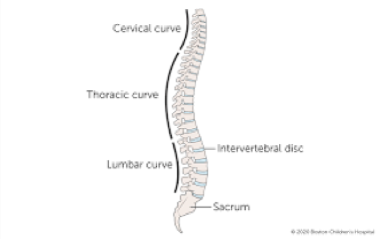
Chair selection
Investing in a high-quality office chair is undoubtedly a wise decision, particularly one that offers adjustable features like height, backrest, and seat tilt. Some chairs come with arms, while others don’t, and the choice depends on personal preference. However, it’s essential to consider that chairs with arms may not always allow for close proximity to the desk. Thankfully, certain office chairs come with adjustable height arms, enabling customization to suit individual body types and requirements.
When it comes to chairs, a one-size-fits-all approach doesn’t apply. Each person has unique dimensions, and the length of our thighs plays a significant role, as it can make certain seats feel either too deep or too short for proper support. Much like testing a mattress before committing to it for eight hours a day, the same consideration should be given to office chairs. Ensuring the chair fits well and provides adequate support is crucial for maintaining comfort and productivity during long work hours.
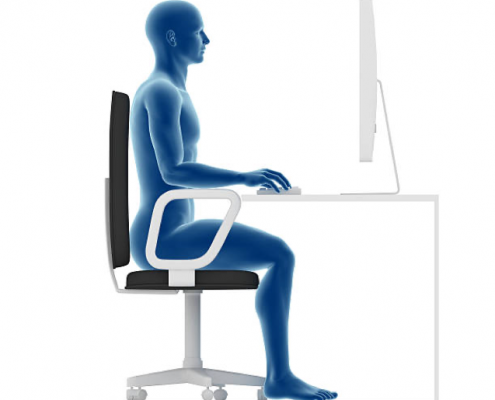
Find an office supply store where you can be like Goldilocks and try a few chairs until you can say “this chair is just right!” Make sure you test it under a desk to make sure any arm supports don’t restrict you from moving in close.
Desk Selection/Set-up
In reality, many of us find ourselves working with whatever desk we have available when setting up a home office, and this article will take that into account. However, it remains essential that the desk space allows for the screen to be positioned at an appropriate distance directly in front of you as you pull your chair under the table. Prolonged neck rotation while looking at a screen can lead to discomfort around the neck and shoulders and possibly even nerve symptoms in the arms. If you use multiple screens, it’s best to arrange them towards the back of the desk to minimize neck rotation.
Moreover, ensuring adequate legroom is crucial, so it’s a good idea to declutter under the desk. Having enough space to move your legs while sitting can improve circulation and overall comfort.
For those who spend extended hours at their desks, considering a stand-up desk might be a beneficial option. This allows for regular changes in posture throughout the day, which promotes the health of muscles, joints, and ligaments. Varying your position between sitting and standing can be advantageous for overall physical well-being.
Finding the right chair vs desk height combo
Strive for a setup that incorporates 90-degree angles. Your posture should ideally maintain right angles at your hips, knees, ankles, and elbows. In practical terms, begin by adjusting the chair height so that your shoulders feel relaxed, neither raised nor drooping, while your arms rest on the desk to reach the keyboard comfortably. Once you’ve found the right chair height, ensure that your lower limbs are also at approximately 90-degree angles. If they aren’t, you might consider using a footrest to achieve the optimal posture.
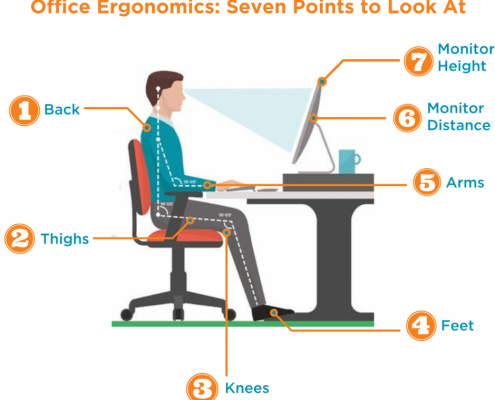
Computers
Computer placement is of utmost importance for maintaining proper ergonomics. Surprisingly, many people position their screens too low in relation to their eyes. For optimal posture, the top of the screen should align with your eye level when sitting upright. If needed, you can use books or suitable risers to achieve the correct height (and maybe even impress your colleagues with your resourcefulness!). For laptop users, investing in a laptop stand and using a wireless keyboard and mouse can provide the same benefits.
Moreover, most keyboards come with adjustable feet underneath them. Utilising these feet to elevate the keyboard slightly puts your wrists in a more efficient position for typing. Ensure that the keyboard is placed far enough back on the desk to allow support for your forearms. Neglecting forearm support can lead to overused neck and shoulder muscles, resulting in discomfort and pain.
To prevent injury from sustained or repetitive movements, consider using a good ergonomic mouse and/or a mousepad. These accessories can help protect your operating arm and improve overall comfort during prolonged computer usage. Prioritising proper computer placement and using ergonomic tools can significantly contribute to your well-being and productivity at work.
Documents and Phones
If you work from documents when using your computer, putting them on a document stand not only improves your posture, but also means you are less likely to spill your coffee on them!
If you spend a lot of time on the phone, a headset or at least using a handsfree speaker will reduce the temptation of poor posture.

Have you ever thought about using voice to text to save on typing effort? Incidentally, did you know your mobile probably has a little microphone at the bottom of the text message screen where you can speak and it converts it to text? It’s faster, and so much better for your arms and hands.
Lighting
We often forget about light! Make sure your work space has adequate light but no glare so that your eyes don’t have to work hard at reading. This will reduce your risk of headaches and dry eyes.
Good workday practice
We are all aware of this, but it’s essential to be reminded: MOVE REGULARLY! This is the best thing you can do for your body. Prolonged postures can tire active muscles, strain ligaments, and cause inactive muscles to shorten. The key is to take short breaks regularly. It doesn’t have to be a long interruption; a quick break for a cuppa and some shoulder circles, head movements (up, down, and side to side), as well as stretching your arms and legs can do wonders. Don’t forget to take a few deep breaths too. Not only will this benefit your body, but it will also boost your mental clarity and productivity.
Consider setting an alarm on your phone as a gentle reminder, and most importantly, don’t ignore it!
Oh, and let’s not overlook the importance of staying hydrated. Remember to drink water throughout the day. While coffee may be a go-to for many, it can dehydrate your tissues, making you more susceptible to injury and discomfort. It’s essential to balance your caffeine intake with adequate rehydration to maintain your well-being while staying focused and alert.
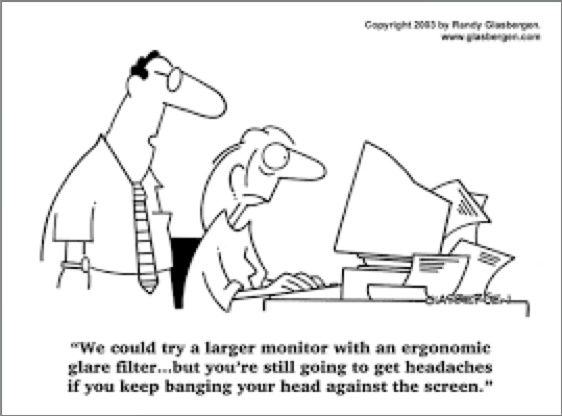
But I have pain already … what should I do?
At Robina Physio on the Gold Coast we can provide a thorough assessment and treatment with regards to your particular problem. Whether it is a chronic condition or an acute pain, we can provide individualised treatment and advice on exercises, postures and work set-up to help you on the road to recovery. Contact us on (07) 5578 7233 or BOOK ONLINE.
